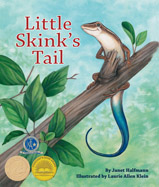Alignment to Standards for VT

| Grade | Number | Standard |
|---|---|---|
| 1,2 | H&SS1-2:11f | Using a simple map to find something (e.g., locating the teacherês desk on a map of their classrooms). |
| 1,2 | S1-2:30 | the parts that make up living things (i.e., roots, stems, leaves, flowers, legs, antennae, tail, shell). |
| 1,2 | S1-2:30a. | Living things (plants and animals) are made of parts that enable survival. |
| 1,2 | S1-2:35a. | All animals depend on plants. Some animals eat plants for food; other animals eat animals that eat plants. |
| 1,2 | S1-2:40 | comparing their physical features with those of other organisms. |
| 1,2 | S1-2:47a. | Change is something that happens to many things. |
| 1,2,3,4 | H&SS1-4:11h | Identifying and using basic elements of the map (e.g., cardinal directions and key). |
| 2,3 | H&SS3-4:11e | Locating major global physical divisions, such as continents, oceans, cardinal directions, poles, equator, tropics, Arctic and Antarctic Circles, tropical, mid-latitude and polar regions. |
| 2,3 | H&SS3-4:11h | Using grid systems to locate places on maps and globes (e.g., longitude and latitude). |
| 2,3 | H&SS3-4:11i | Asking appropriate geographic questions and using geographic resources to answer them (e.g., what product is produced in a region and why; atlas, globe, wall maps, reference books). |
| 2,3 | S3-4:30 | Explaining how the physical structure/characteristic of an organism allows it to survive and defend itself (e.g., The coloring of a fiddler crab allows it to camouflage itself in the sand and grasses of its environment so that it will be protected from pr |
| 2,3 | S3-4:30a | Organisms have physical characteristics that help them to survive in their environment. These structures enable an organism to: defend itself, obtain food, reproduce, eliminate waste. |
| 2,3 | S3-4:36 | Explaining how one organism depends upon another organism to survive. |
| 2,3 | S3-4:38 | Describing and sorting plants and animals into groups based on structural similarities and differences (e.g., All pine, spruce and evergreen trees have similar leaf structures; Spiders have eight legs, and insects have six). |
| 2,3 | S3-4:38a. | The great variety of living things can be sorted into groups in many ways using various characteristics to decide which things belong to which group. |
| PK-K | H&SSPK-K:11c | Describing or identifying a map or globe. |
| PK-K | H&SSPK-K:11e | Using a simple map to find something. |
| PK-K | SPK-K:38 | Sorting and identifying examples of plants and animals. |
| PK-K | SPK-K:38a. | Some living things (organisms) are identified as plants or animals. |